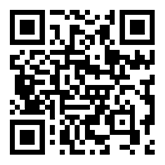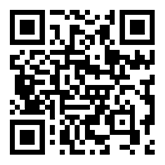The Ministry of knowledge economy (mke) of South Korea announced on August 25th, 2008 that the National Standards Commission will implement a new national unified certification mark, called "KC mark", from July 2009 to December 2010.
The new logo is called KC mark, representing Korea certification. The current 13 mandatory signs will be finally unified under this new sign.
One result of this measure is to reduce the expenditure of suppliers on certification fees, so that Korean KC mark will gradually become a certification of a world brand. However, there is a drawback. The recently issued KCC logo will only be implemented for a few years, and will eventually be unified under this new KC logo.
The Korean Institute of technical standards (Kats) announced on August 20, 2008 that it would implement the new certification system KC (Korea certification) certification on January 1, 2009. The plan has been first implemented by the Ministry of knowledge economy since July 2009 and is expected to be extended to all departments by the end of 2010. The implementation plan of KC logo is as follows: December 2008: revise the basic law of national standards and its implementation order; July, 2009: the Ministry of knowledge economy began to implement and adopt the national unified KC logo; From January 2009 to December 2010: amend the laws related to standard certification; January, 2011: apply the KC mark to all certifications.
KC mark certification products list (KC certification products list), according to the provisions of the Korean electrical supplies safety management law, since January 1, 2009, the safety certification of electrical supplies has been divided into compulsory certification and self regulatory (voluntary) certification.
Compulsory certification means that all electronic products belonging to compulsory products must obtain KC mark certification before they can be sold in the Korean market It needs to accept Factory review and product sampling test every year.
Self regulatory (voluntary) certification means that all electronic products belonging to voluntary products only need to be tested to obtain a certificate, and do not need to be subject to Factory review. The certificate is valid for 5 years.
The Korean Safety Law stipulates that after accepting the application, the authorization needs to conduct the first factory review of the factory. According to the requirements of the safety law, the preliminary evaluation of the factory's quality control system involves the following aspects:
The factory shall produce certified products consistent with the qualified samples confirmed by the certification authority in accordance with the requirements of product certification implementation measurement and factory quality assurance capacity. According to the relevant laws of Korea safety certification and the relevant regulations of Korea Industrial Technology Testing Institute (KTL), your factory should have the following documented procedures or regulations, which should be compatible with the factory quality management and product quality control:
1) Product change control procedures (for example: after the change declaration of certified products is approved by the certification authority, the relevant department shall formulate corresponding technical documents in strict accordance with the approved changes and distribute them to the relevant departments to correctly implement the changes of certified products. Unapproved changes cannot be applied with certification marks on the changed products.
2) Document and data control procedure
3) The quality record control procedure {shall include the retention period of records for at least 3 years (only incoming, routine and operational inspection records are required)}
4) Routine inspection and confirmation inspection procedures
5) Nonconforming product control procedure
6) Inspection or verification procedures for key components and materials
7) Internal quality audit procedure
8) Process operation instructions, inspection standards, instrument and equipment operating procedures, management systems and other procedures. The factory should keep at least the following quality records to confirm that the factory has indeed carried out all production inspections and production tests, and the quality records should be true and effective
9) Product routine inspection and confirmation inspection records; Incoming inspection / verification records of key components and materials and conformity certificates provided by suppliers
① Records of regular calibration or verification of inspection and test equipment;
② Routine inspection and confirmation (operation) inspection records;
③ Daily spot inspection records of safety equipment on the production line (workshop);
④ Disposal records of nonconforming products (incoming, routine and operation);
⑤ Records of internal audit;
⑥ Records of corrective measures taken in case of customer complaints;
⑦ Nonconformity correction records of operation inspection;
Annual Factory review requirements:
After the certificate is authorized, the certification body will conduct an annual follow-up review of the factory every year, mainly to check the consistency of the factory's quality control system and whether it can continue to comply with the standards of the safety law.
The annual Factory review is divided into two parts
1) The requirements and contents of quality documents, quality records and relevant contents of the manufacturing site are basically the same as those of the initial review.
2) It is necessary to confirm the consistency of all products authorized by KC mark in the factory. Confirm the key components, materials, circuits, structures, etc. of the certified products according to the attached pages of the product authorization certificate (list of key components), and see whether they are consistent.
Sampling requirements:
There are 216 products listed in the scope of KC mark compulsory certification so far. Korean Safety Law stipulates that all kinds of products are sampled every year, so each product is sampled once a year.
The sampling method is:
The factory inspector shall conduct the annual review. When there is production or inventory on site, the inspector shall seal the samples, and the factory shall send the samples to the designated address within 3 months.
If there is no production or inventory at the time of Factory review, the factory must send the designated samples to the designated address within 6 months.












